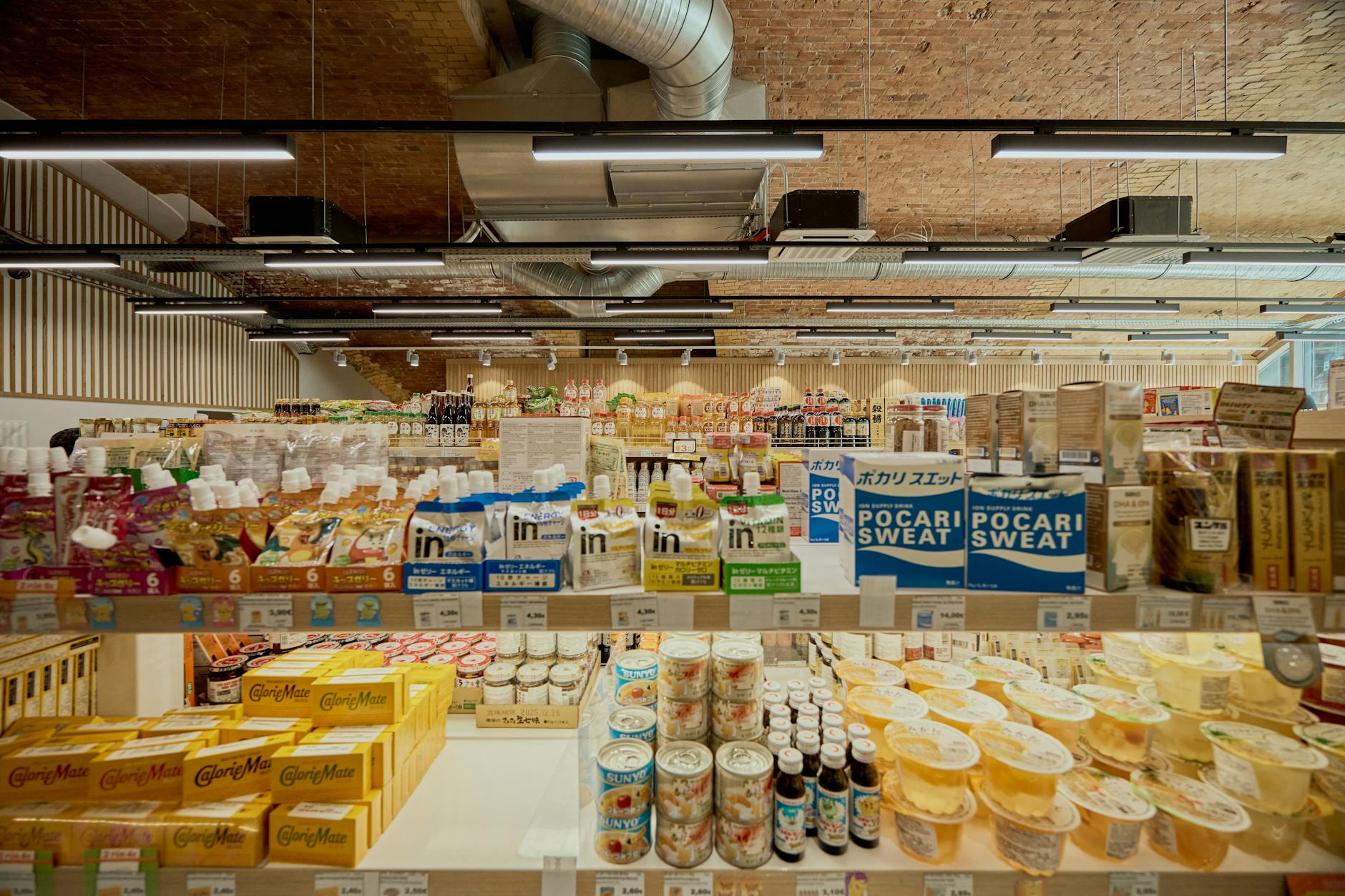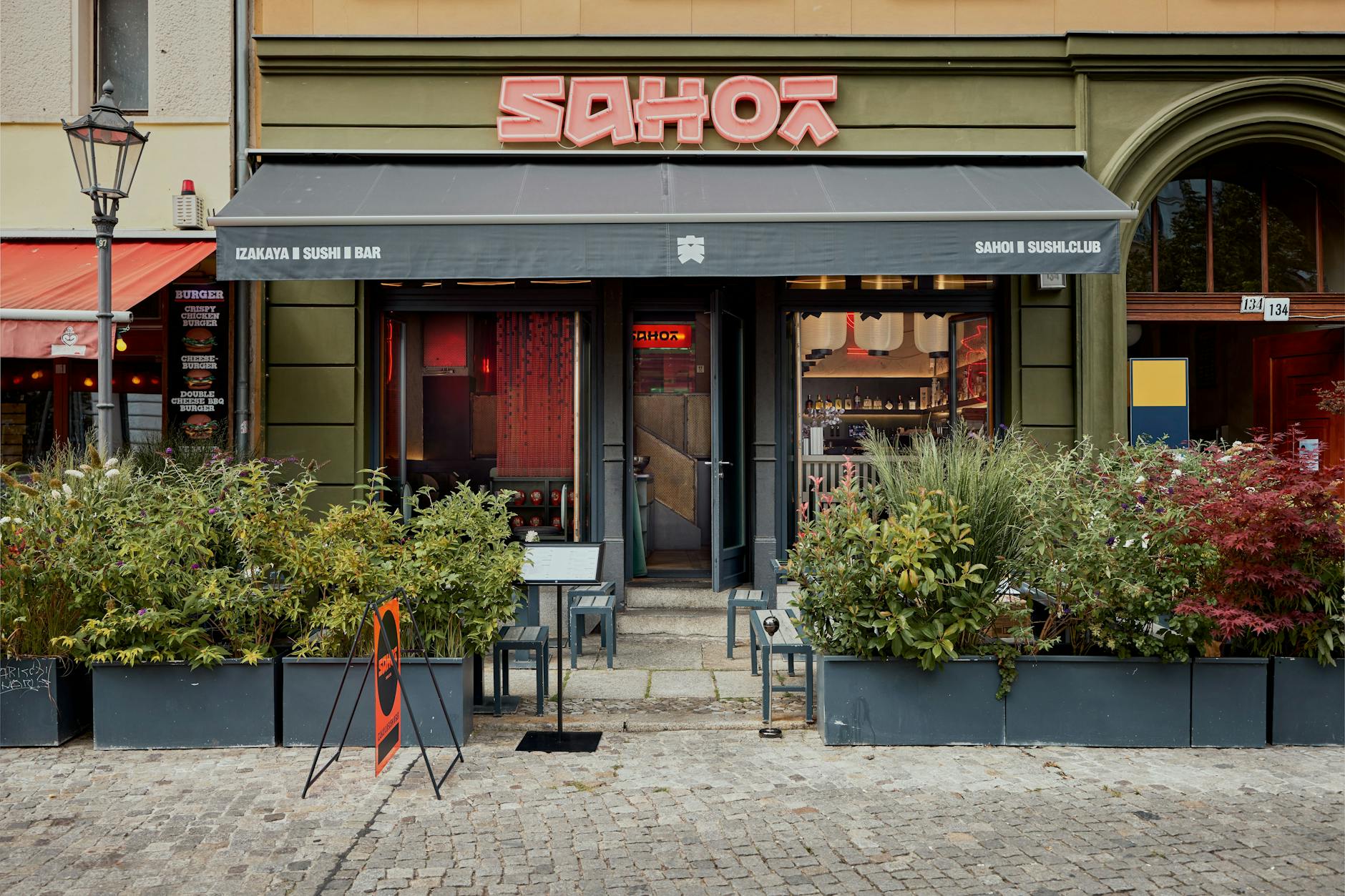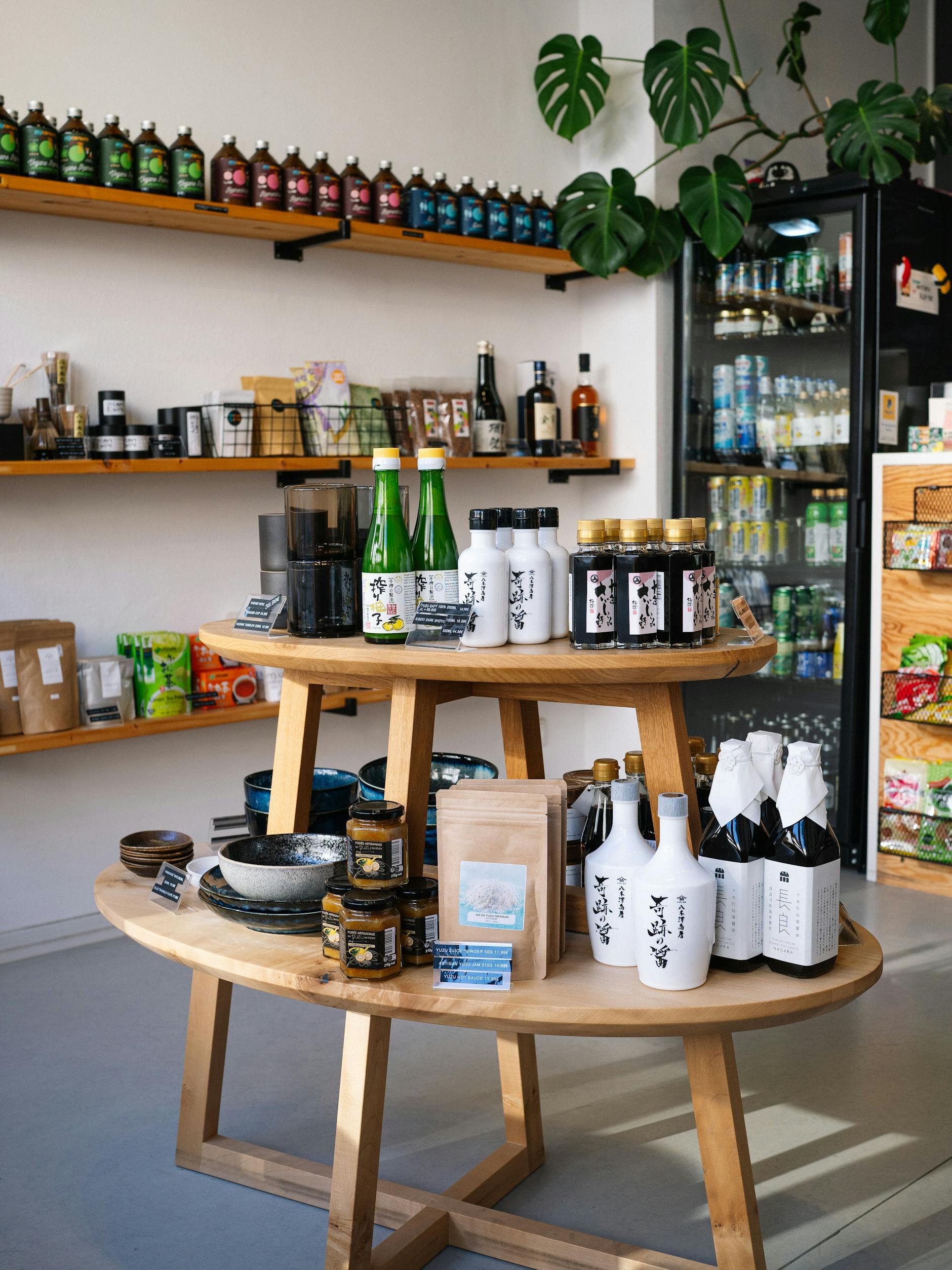Kon'nichiwa! Here you can get the best Japanese food in all of Berlin

Sakura mochi from the supermarket, Matsusaka wagyu at a grill restaurant: where you can enjoy delicious Japanese food in Berlin.
Have you eaten Japanese food recently? Probably, even if you didn't realize it. Because in Berlin, people are drinking matcha and yuzu lemonade everywhere these days, calling it izakaya instead of pub, and ordering katsu and sando.
Travel to Japan is also booming, while Japanese restaurant concepts are springing up all over the city for those staying at home—new konbinis, ramen restaurants, sake bars. We visited four such locations in the city, from Kantstraße in Charlottenburg to Linienstraße in Mitte . How much Japan is there in Berlin?
1. Japan Plaza Market: Konbini under the subwayAn S-Bahn arch in the wilderness between Alexanderplatz and Unter den Linden, amidst a kitschy shop window: plastic mock-ups of ramen bowls, shiny rice balls wrapped in foil. A Japanese supermarket, as if someone had transplanted it directly from Shibuya. Since the end of 2023, the Japan Plaza Market has brought the concept of the Japanese konbini—those functional, well-stocked mini-supermarkets—to Berlin in a credible way.
Konbini, derived from the Japanese konbiniensu sutoa, are true all-rounders in Japan. Anyone who shops there once wonders why the rest of the city is even needed. You can buy nicotine patches, get hot meals around the clock, and fax divorce papers to your lawyer. The dishes are often better than those in a restaurant: fresh, seasonal, and the variety is impressive even at night. The Japanese 7-Eleven, with its legendary egg sandwiches, smoothie machines, and ramen bars, has become a cult favorite: There are more than 21,000 branches from Tokyo to Fukuoka.

At Japan Plaza Market, however, there are no tobacco products, nor is there any way to organize life decisions via fax machine. But as far as the food goes, almost everything is just right: The onigiri, starting at €2.90 each, are juicy and classically filled with salmon and mayo or teriyaki chicken. The selection of Japanese drinks ranges from Boss Coffee to caffeinated canned milk tea.
At the very back, at the end of the market, where the light grows cooler and the shelves hum lower, lies the refrigerated sushi section. The path there leads past sakura mochi for €3.99, neatly wrapped rice cakes in salted cherry leaves, and Coca-Cola with aloe vera flavor for €1.40 a bottle.

Arriving at the sushi corner, genuine fillet pieces await: Hamachi sashimi boxes starting at €20. Hamachi is a fatty yellowtail fish that has become the epitome of a global obsession with Japan. According to Ei Kiuchi of the Japanese Fisheries Export Federation (JFFEA), Hamachi exports to Germany have increased fiftyfold since 2020 – from one to around 51 million yen in market value.
Japan Plaza Market. Rochstraße 14e, 19178 Berlin. Mon-Sat 9am-8pm. www.japandoodexpress-shochiku.de/japanplaza
The Izakaya Sahoi is located directly across from the former Tacheles restaurant in Mitte. Sahoi, or rather Xã hội, means "society" in Vietnamese, and so upon entering, the dim red lighting gives you the feeling of having arrived at an exclusive club—an impression enhanced by select yet unobtrusive beats from a high-quality, high-end audio system.
If desired, a section of the restaurant can be secluded for private evenings, inspired by Japanese pubs. Whether behind closed curtains or in the heart of the hip restaurant, this is all about enjoying the company of others.

Izakayas are places where guests linger and drink sake, never without an accompanying snack menu—Japanese tapas bars, if you will. In addition to eleven sake varieties, which cost between €9 and €12 by the glass and cover a wide range of flavors from mild to bitter, Sahoi offers exceptionally good cocktails made with Japanese gin, whiskey, or vodka. Sushi is also offered; the sashimi, also served with hamachi for €22, is particularly outstanding.
Once a month, Sahoi offers a cutting show , where a bluefin tuna is butchered in front of guests. Thanks to expert technique, every cut is perfect, and the tiled counter provides the perfect stage. The whole tuna is later eaten with the guests.
Sahoi. Linienstraße 134, 10115 Berlin. Mon-Sat 6-11 pm. www.sahoi.club
3. Nikuya Yakiniku: real centimeter workJapan, besides its love of yellowtail, is the country where cattle are massaged, played Mozart, and, in the case of Matsusaka Wagyu, even fed beer. Last year, 506,650 of these highly bred wonder cows were slaughtered in Japan. The city's best Wagyu beef can be found, who would have thought, in an industrial park behind the ring road in Westend.

This is where the Japanese grill restaurant Nikuya Yakiniku is located, which opened in 2023. The decor is simple, the meat quality outstanding. The menu lists prefectures, but no prices: If you point to Kagoshima—in the very south of Japan—you'll get Wagyu from there, along with information about the producer.
Instead of a serving tray, the order arrives in a ceremonial box, a kind of wooden samurai shrine. Inside lies the Wagyu, laid out like diplomatic passports at the border: meticulously separated by cut, accompanied by small signs bearing words like "Chuck Flap," "Flank," or "Rump." As a side dish, we order a selection of US Angus beef, the true favorite meat of the Japanese. After all, Japan imports far more beef from the US than it produces Wagyu itself.
While the Angus delivers a solid meal at €85 per person, the self-imported Japanese A5 Wagyu – around €30 to €100 depending on your choice – is in a different league. It's hardly comparable to a conventional steak; plenty of wonderful beef fat interspersed with a smooth network of muscle. The meat almost melts like butter on the tongue. The fat, we learn, melts differently depending on how the animal lived, worked, and stood on the Japanese meadows. Note: The animals in the south are fatter.

This, too, is a hallmark of Japanese cuisine: the product and its characteristics become a ceremonial part of the meal. Restaurant manager Joanne frequently scurries to the table and takes over the grill. The arrangement of the cuts follows a strict sequence, she says. "Only this way can you discover what makes meat so different as a product—and which inch of cow tastes best."
Nikuya Yakiniku. Königin-Elisabeth-Straße 52, 14059 Berlin. Sun-Thurs 5-10:30 pm, Fri-Sat 5-11 pm. www.nikuyayakiniku.de
4. Myconbini: Street fights at the candy aisleThere's also a konbini on Torstraße, inspired by the 24-hour convenience stores where Japanese people get their coffee in the morning, ramen for lunch, and sweet snacks at midnight. MyConbini is the name of the shop in Mitte. Its founder lived in Tokyo for a year and still raves about the chicken at a Family Mart branch there, one of the country's largest konbini chains.

Unlike its Japanese counterparts, MyConbini on Torstraße isn't open 24 hours; its opening hours, from 11 a.m. to 7 p.m. on weekdays, are geared more toward the German market. Culinary-wise, however, the small shop stays pretty close to the original: For just under €3.50 each, guests can enjoy freshly prepared onigiri every day—handy rice balls for those quick snacks, as well as pastries filled with sweet bean paste and Japanese watermelon-flavored chews.
Those who would rather try their hand at Japanese cuisine will find all sorts of classic ingredients on the shelves, such as miso (around €20 for a 500-gram package), soy sauce, and seaweed. And a bit of kitsch isn't missing either: sushi-patterned socks are available here, and a slot machine featuring "Streetfighter II" invites you to a digital battle in bright colors. (mav.)
Myconbini. Torstraße 18, 10119 Berlin. Mon-Fri 11am-7pm, Sat 11am-6pm. www.myconbini.com
Berliner-zeitung





